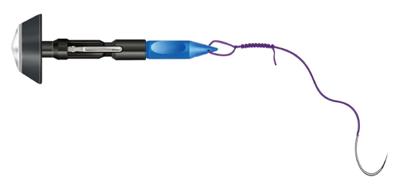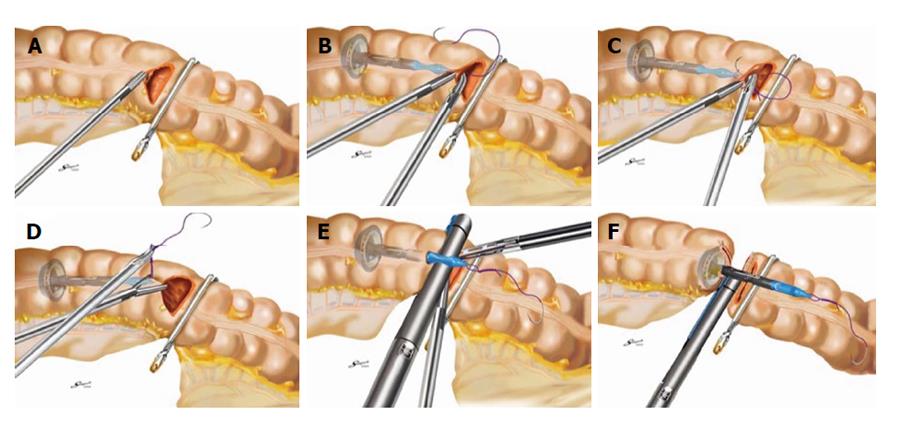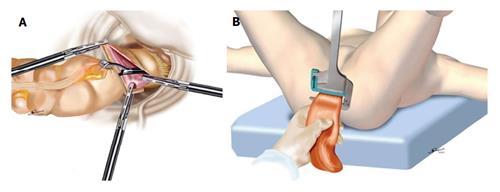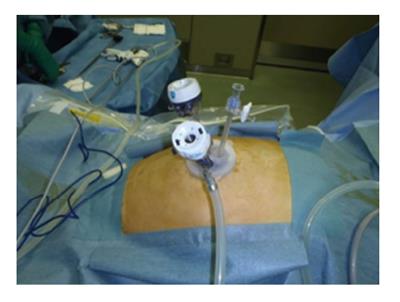Copyright
©The Author(s) 2015.
World J Surg Proced. Mar 28, 2015; 5(1): 58-64
Published online Mar 28, 2015. doi: 10.5412/wjsp.v5.i1.58
Published online Mar 28, 2015. doi: 10.5412/wjsp.v5.i1.58
Figure 1 The anvil of a circular stapling device with its center rod secured with a 2-0 monofilament suture at the hole of the tip, is shown.
The suture is tied over 10 times so that the thread that is pulled completely out of the colon does not slip into the intraluminal cavity.
Figure 2 Efficient purse-string stapling technique.
A: A semi-circumferential colotomy is performed at the colonic wall just proximal to the forceps; B: Anvil insertion into the colon via a semi-circumferential colotomy: An anvil with suture is held by a grasper and fully inserted into the proximal colon; C: The accompanying needle is advanced through the anterior colonic wall; D: The suture is pulled out of the colon until all knots are completely exposed; E: While pulling the suture to the right side horizontally, the colon is clamped using a linear stapling device with disposable gastrointestinal cartridge; F: The colon is then transected by firing the instrument to secure the anvil on the colonic stump.
Figure 3 Transanal specimen extraction.
A: In sigmoid colectomy, a grasping forceps is brought through the rectum, and the specimen is extracted through the colotomy made at the distal staple line; B: In low anterior resection, a grasping forceps is inserted under laparoscopic vision from the anus to grasp the staple in the stump, and the distal rectum is everted and pulled transanally outside the body.
Figure 4 Intra-operative view of single-incision laparoscopic colectomy.
We make an 2.5-cm long vertical incision in the umbilicus, and typically use E-Z Access (Hakko Co. Ltd., Nagano, Japan) on the Lap Protector™ (Hakko Co. Ltd., Nagano, Japan) for the insertion of two 5-mm trocars and one 12-mm trocar for a right colectomy, and one 5-mm trocar and two 12-mm trocars for a left colectomy, sigmoidectomy or rectal resection.
- Citation: Akamatsu H, Tanemura M, Kishi K, Tei M, Masuzawa T, Wakasugi M. New approaches in laparoscopic surgery for colorectal diseases: The totally laparoscopic and single-incision approaches. World J Surg Proced 2015; 5(1): 58-64
- URL: https://www.wjgnet.com/2219-2832/full/v5/i1/58.htm
- DOI: https://dx.doi.org/10.5412/wjsp.v5.i1.58
















